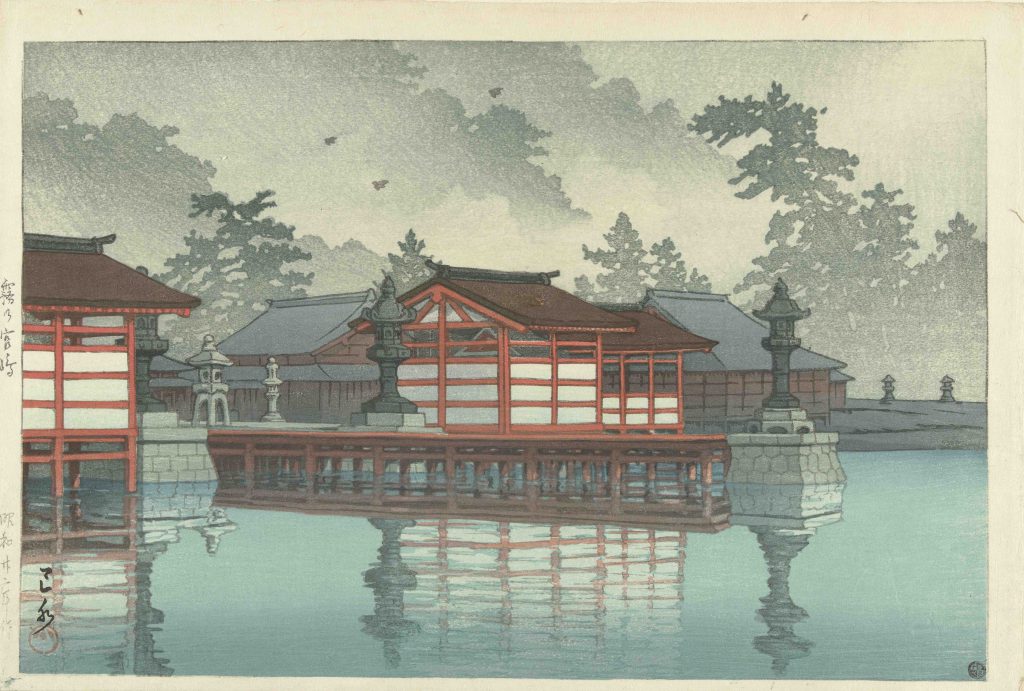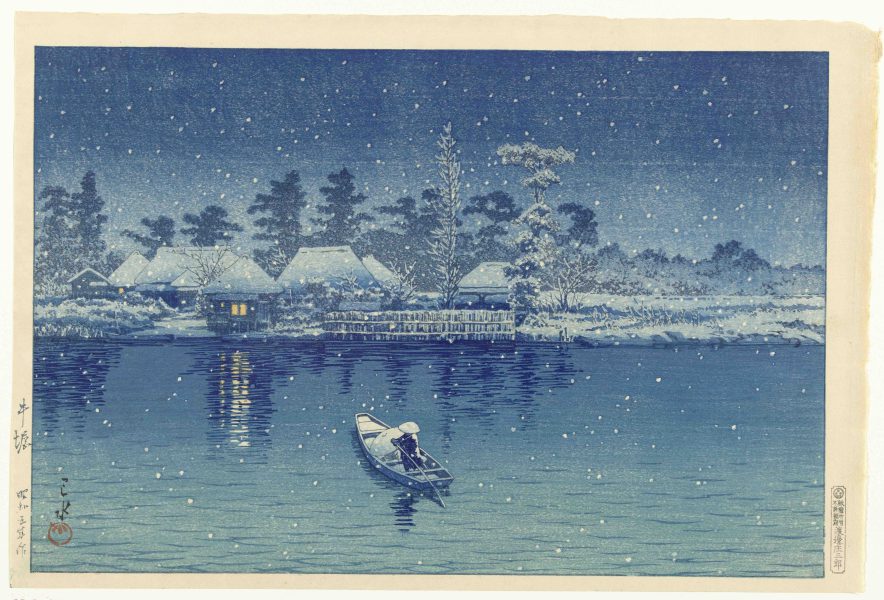Ukiyo-e of the New Era
Shin-hanga refers to woodblock prints produced in Japan in the first half of the 20th century.
During the Edo period (17th to 19th centuries), woodblock prints, known as Ukiyo-e, were very popular in Japan, and star artists such as Katsushika Hokusai, Utagawa Hiroshige, and Kitagawa Utamaro were born one after another.
However, with the end of the Edo period in 1867 and the beginning of the Meiji period (1868-1912), the influx of Western culture and the rapid development of printing technology led to the rapid decline of the old Ukiyo-e culture.
One person who was concerned about this decline was an art dealer named Shozaburo Watanabe. Aiming to revive the declining Ukiyo-e as an art form for the overseas market, he personally became the publisher and had various artists create new prints.

Kawase Hasui(1883 – 1957), “Morning in Beppu” (Image from rijksmuseum)
Reviving the Traditional Division of Labor
Originally, Ukiyo-e was created through the division of labor between the “painter,” “engraver,” and “printer. Since the late Meiji period, however, the genre of “creative prints,” in which the artist himself performs the tasks of “making the original picture,” “engraving,” and “printing” by himself, has become a popular genre.
Watanabe dared to focus on the value of traditional Ukiyo-e prints, which are produced under the division of labor among the “painter,” “engraver,” and “printer. He gave them a new brand name, “Shin-hanga,” and aggressively marketed them overseas.
Watanabe’s plan was successful, and “Shin-hanga” was highly acclaimed by overseas collectors and enjoyed considerable prosperity for a time. During this period, artists such as Kawase Hasui, Yoshida Hiroshi, Ohara Koson, and Ito Shinsui emerged, and they created one after another a new era of print art that was different from the Edo period.
Shozaburo Watanabe thoroughly studied the engraving and printing techniques of the Edo period, and in his “new prints,” he developed new engraving and printing techniques based on these studies.
Ukiyo-e was a kind of media for the entertainment of the masses, whereas shin-hanga was a kind of artistic product intended to be “fine art” for the overseas market. It was a different concept from Ukiyo-e, and the techniques used were also different.

Kawase Hasui(1883 – 1957), “Miyajima in the Mist”(Image from rijksmuseum)
Newly in the spotlight again
Unfortunately, World War II put an end to the new print boom, and by the 1950s, printmakers producing new prints had ceased to exist.
From then until the 1990s, shin-hanga was never mentioned in Japanese art history and became a completely forgotten phenomenon. However, an exhibition titled “Reviving Ukiyo-e: Uruwashiki Taisho Shin-hanga” was held at the Edo-Tokyo Museum in 2009, which triggered a revival of the art. Since then, art fans have gradually become aware of the “Shin-hanga” genre.
Today, the high artistic quality of these prints is gaining renewed recognition, especially among overseas fans.

Kawase Hasui(1883 – 1957), “Ushibori”(1930/Image from rijksmuseum)

